There was no better symbol of the Trump administration’s plans for sabotaging the Affordable Care Act than how, soon after the inauguration, its Department of Health and Human Services prioritized erasing mentions of the law on its web page.
The removals, as blatant as they were petty, quickly caught the attention of health care experts and portended a broader Trump effort to shirk its duties to implement the law, even after it became clear Congress was going to be unable to repeal it.
But the extent of the erasure effort is only just now becoming clear. New documents recently obtained by TPM give a fresh view into how sweeping and systematic this purge of ACA mentions was, and how, four years later, federal public health websites are still devoid of key references to the law.
The documents confirm long-held suspicions that the Trump administration ordered federal contractors to conduct an expansive keyword search for any place that the 2010 law was mentioned on the webpages of various HHS offices.
The search turned up hundreds of examples, and without much apparent debate, many of those mentions were ordered removed. The administration wasn’t taking a scalpel to the Affordable Care Act’s web presence to make it more reflective of Trump’s goals for reworking the law. It was pounding the law off the website with a sledgehammer.
While there were some carve-outs in the project for certain types of Obamacare references, other allusions to the ACA were scrubbed with seemingly no regard to the public health consequences of obscuring information about the law.
Providers who might be looking for regulatory information on Obamacare policies no longer see a link to the law on the HHS’ main regulations page, thanks to the 2017 removal job. Women seeking information about contraceptive care had information withheld from them about the Affordable Care Act’s coverage requirements for those preventative services.
The documents detailing the way in which mentions of the law were removed from federal websites were obtained by TPM through a 2017 Freedom of Information Act request.
Indications that the Trump administration was making aggressive efforts to suppress information about the law — going far beyond how a new administration typically may boost or play down its predecessors’ policy initiatives — were picked up on in 2017, as Congress embarked on its repeal effort.
The administration did not wait to see whether Congress would succeed before it remade the HHS websites as if the law didn’t exist. Nor did it restore the scrubbed mentions once Congress signaled it was moving on from repeal, a review of the newly obtained documents shows.
“It’s not written in stone that the words ‘the Affordable Care Act’ have to appear on these informational websites. The key is making sure people have the information they need to get the health insurance that’s right for them,” said University of Michigan Law professor Nicholas Bagley, who specializes in administrative law and health care.
“If they wanted to scrub it and use different kinds of language, that’s fine,” he said. “But the way that they went about it suggests that their goal was not to help people, but that their goal was to efface the accomplishments of the prior administration.”
A Rationale For ‘Preemptively’ Removing References
At the time references to the law began to disappear from the website, the Trump administration was taking several other actions to undercut Obamacare’s implementation — from stiffing insurers on subsidies promised to them under the law to creating videos using taxpayer money that criticized the ACA.
It soon became apparent that the removals were not random acts of website maintenance by low-level bureaucrats, but part of a concerted effort to starve the law of attention.
For everyone who thought my “Orwellian” post from last December was over the top, this was sent to me yesterday: https://t.co/0SLF0rR9xj pic.twitter.com/RMUFbDLYi8
— Charles #GetCovered-ba (@charles_gaba) July 21, 2017
Researchers from the Sunlight Foundation — which was tracking that and other Trump-era examples of information censorship across the federal government — were given a flimsy rationale for why the edits were happening when they spoke to HHS’ Office of Women’s Health about the removals noticed on that office’s website.
“They basically said, ‘Well you know, we don’t know if the Affordable Care Act will remain law, so we want to preemptively remove references,’” recalled Rachel Bergman, one of the researchers who worked on the Sunlight Foundation’s review. “Well, of course it was still law at the time we spoke to them, as it still is.”
Indeed, based on the documents obtained by TPM, the pages of several other HHS offices were being subjected to a similar keyword search for “ACA” or “Affordable Care Act.” Once the mentions were logged in a spreadsheet, someone involved in the project made a decision — often logged on the spreadsheet — whether the reference should be deleted or otherwise edited.
At least for one HHS office, the Office for Civil Rights, a decision was made at the time to leave certain regulatory ACA information on the website “until something changes.” But for various other HHS portals, there was no such hesitancy about censoring information about a law that the federal government was still obligated to implement.

No Longer Making Sure That People Know The Preventative Services They’re Eligible For
Different parts of the HHS website are designed for different audiences, former communication officials at the department told TPM, and thus the potential impact of the removals depend on the context of what was being removed.
Among content erased from the website was basic information about the coverage the ACA guarantees to those with pre-existing conditions, those potentially eligible for Medicaid under the law’s Medicaid expansion and for preventative care.
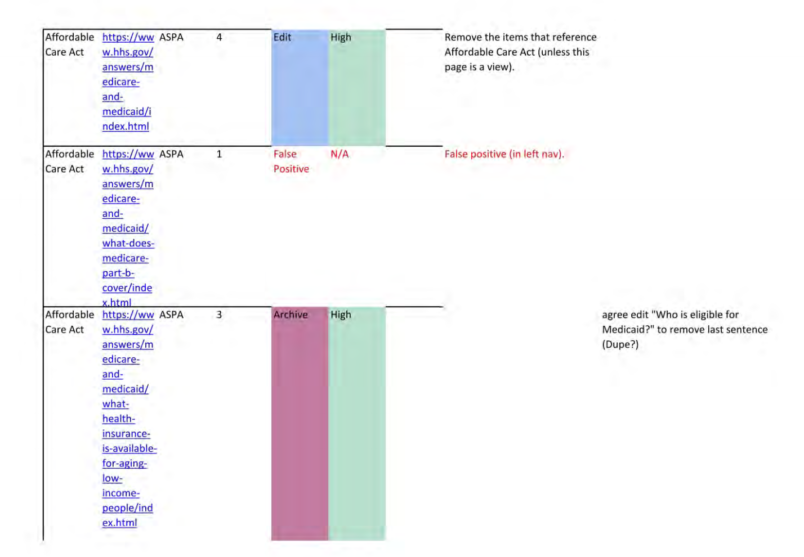
Some of those purges happened in flashy ways; for instance an entire FAQ page about the law was deleted from the site, and the links to information about the law that were placed on various navigational bars during the Obama administration were removed.
But the edits included more obscure references to the law, buried on pages providing information about specific medical conditions, as well. For instance, the contractors were instructed to remove a line about the law’s coverage of a certain hepatitis vaccine that was identified in a package of public information materials about the virus.
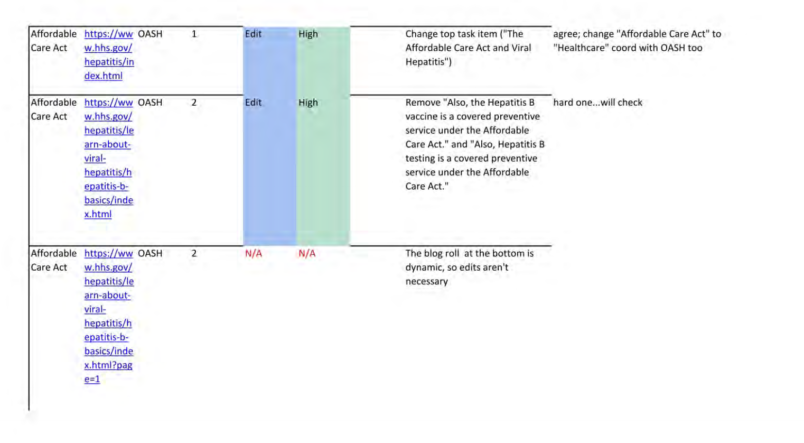
It’s worth remembering, said Sarah Leuck, an ACA expert at the left-leaning Center on Budget and Policy Priorities, that when the public visits HHS pages about specific conditions, they may already be in a state of panic or concern about a health issue they or a family member is facing. Those edits withheld from them information that would be helpful in that potentially fraught moment.
“People are often — when they’re looking for information about things like, ‘Does my coverage include x?’ — they’re in a kind of a crisis, potentially, or they’re concerned or they’re worried or they don’t know if they can get a service maybe for their family member that they need,” she said.
By impeding individuals’ access to coverage information, the Trump administration was also undercutting the law’s broader aim of expanding the use of preventative services.
“A big part of the Affordable Care Act that obviously held huge amounts of promise and was a big part of HHS’s work in implementing the law was not only making sure that these preventative services can be delivered at no cost to the patient, but also that people knew that and knew to ask for that,” Marjorie Connolly, a former communications official for the HHS under the Obama administration, told TPM.
Obscuring For Providers And Partners Information That Can Help People Get Care
It’s not just patients who had a harder time finding information about the law thanks to the Trump-era removals. Edits were made to pages that helped health care providers and organizations do outreach around the law and educate patients about the care to which they are entitled.
For instance, a portal to information about ACA regulations was removed from its prominent placement on hhs.gov/regulations and has yet to be added back.
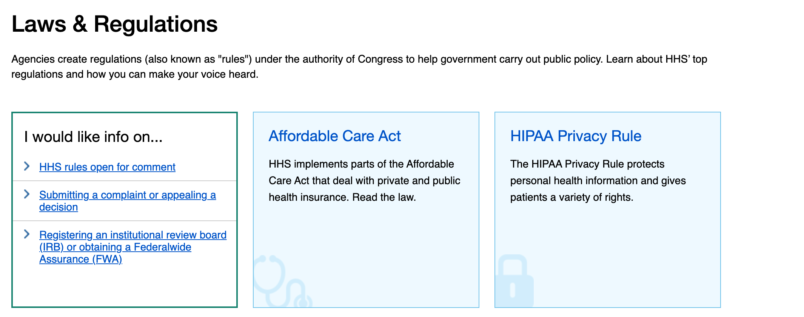

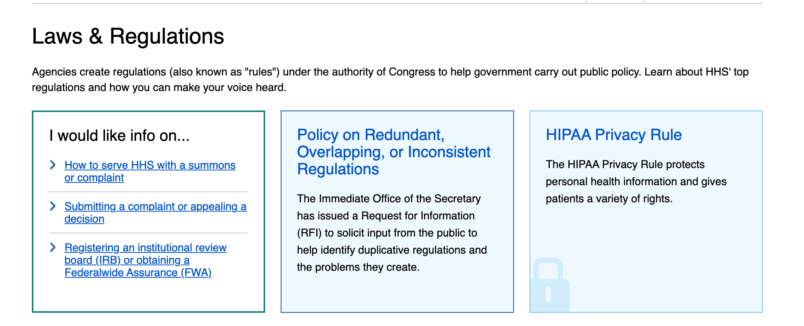
“Providers don’t have the same information, depending on where they are in the country, what type of facility they’re at,” Bergman said. “So the federal government is a place where they’re supposed to be able to get information about what kind of care they’re able to provide to their patients or what the patients can be seeking from them under the Affordable Care Act.”
The Trump administration took down entirely, according to the internal documents, pages explaining and promoting the ACA partnerships the government had with community groups and faith-based organizations. Even though the Trump administration was defunding and ending this collaborative work, that information could still have been useful for the groups that planned to continue the outreach on their own, experts told TPM.
Mentions of the ACA were removed from the mission statements of HHS agencies, and even edited on the page containing the contact information for the HHS spokesperson who was the go-to for ACA-related inquiries. The Trump administration also targeted for removal blog posts promoting ACA initiatives. Those posts were put in an archive and now take some digging to find, while other HHS content from the pre-Trump days was allowed to stay on home pages.
“On some sites, those [blogs] might be the most heavily trafficked, compared to the denser information about the ACA,” Bergman said. “Those are meant to be easily accessible to lay people.”

Under the Biden administration, the HHS — which did not respond to TPM’s inquiries about the status of the removals — has its plate full between the pandemic and the major changes to health care laws (including the ACA) coming in the relief bill that is working its way through Congress
But experts urged the administration to take a look at adding back to its pages the ACA mentions that were removed under Trump.
“That’s gonna be important work moving forward,” Connolly said. “Because one of the reasons you might have seen the information about preventive health care woven throughout the website is that that was a message that was harder to get out.”
Read the documents below:


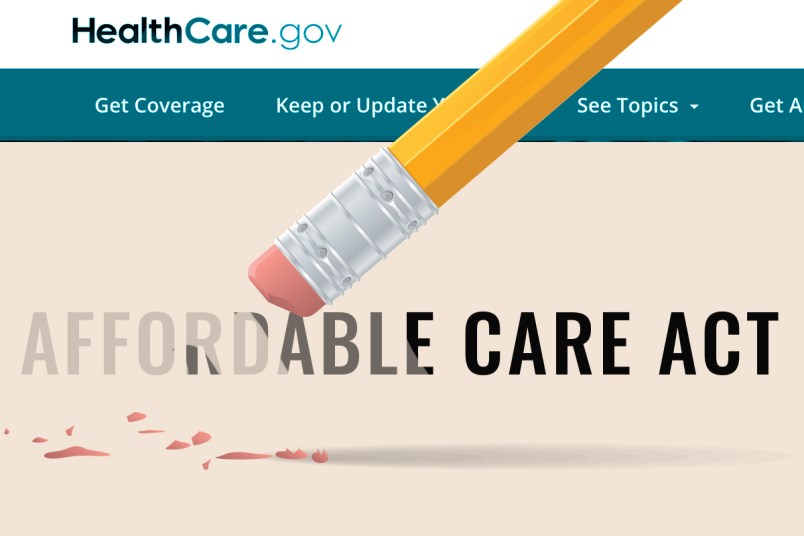




Cancel culture.
The fact they didn’t drown it in the bathtub when they controlled congress speaks volumes about their blowing and sucking.
Bad faith actors.
And hatred of the political Left, something the Right also whines incessantly about.
We know rump despises Obama and the ACA, but it’s hard to imagine this dope ordering this. Approving it? Yes, but I don’t think he’s smart enough to have ordered this. One of his flunkies suggested it. He consented.
OT and hell yes